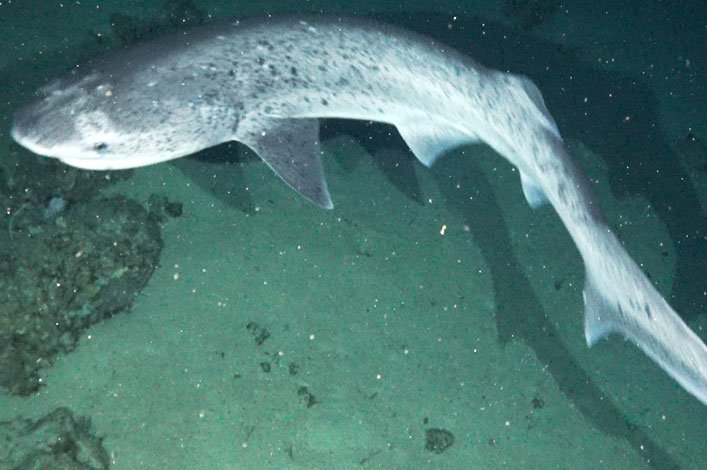
For the first time, scientists have observed a broadnose sevengill shark Notorynchus cepedianus and bluntnose sixgill Hexanchus griseus in the deep waters of the Galapagos Marine Reserve (GMR) off the northern coast of Floreana and Española.
Both species were confirmed by elasmobranch taxonomist Dr. David Ebert at Moss Landing Marine Laboratories. Observations were made during a deep-sea pilot research study in September and October 2019 lead by Charles Darwin Foundation’s marine scientist Salome Buglass, in collaboration with the Galapagos National Park Directorate, National Geographic Society, Massachusetts Institute of Technology’s (MIT) Media Lab Open Ocean Initiative, and Lindblad Expeditions (LEX).
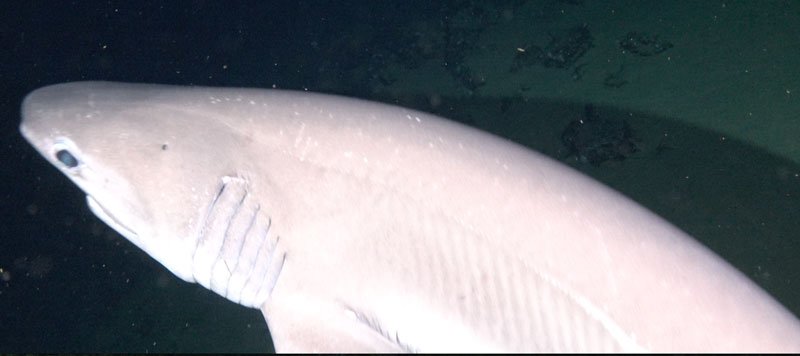
Dr. Ebert said, “The occurrence of the broadnose sevengill shark, a coastal species, around the Galapagos is exciting and raises interesting questions about its migratory behavior. Sixgill sharks are primarily deep-sea and are one of the most abundant large deep-sea sharks.”
Both species belong to the Hexanchidae family, commonly known as cow sharks, considered among the most primitive groups of sharks. Their most distinctive features are their number of gills which have six to seven slits, unlike most other sharks which tend to only have five slits.
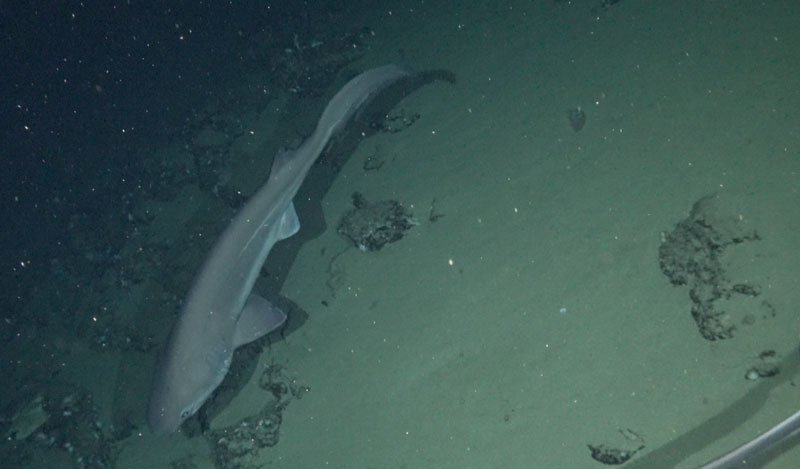
These findings contribute to the understanding of both species’ territorial range. This is vital information for guiding the management of fisheries and Marine Protected Areas that may be affecting the sharks.
These new records of two apex predator shark species demonstrate how little we know about the life that exists in the deep-sea of the GMR and highlights the importance of continuous exploration in these remote spaces where there is much more to discover.
About the six and seven gilled cow sharks
Two N. cepedianus individuals were observed swimming in front of National Geographic’s deep sea camera system, enabling easy identification. This species can reach up to three meters in length and are apex predators that feed on fish, other sharks and rays, and marine mammals. Both individuals attacked the camera, intrigued by the tuna housed within the bait case.
N. cepedianus is the only existing species of its genus and is commonly found in shallow coastal waters, bays, and estuaries of temperate seas. Previously spotted on the coast of continental Ecuador, this is the first time the species has been recorded in Galápagos, in waters of 210 m deep, which provides new information about their distribution and habitat preferences.
This species is categorized by the International Union of Conservation of Nature (IUCN) as “data deficient” in the Red List of Threatened Species.
Observed at 418 m depth, H. griseus slowly swam in front of the camera for over 3 hours. This species can reach over five meters in length, making it one of the largest apex predators in the deep sea. This deep-water species has a global distribution, however, this is the first time it has been recorded in Galápagos and Ecuadorian waters. This species is considered as a “near threatened species” on the IUCN Red List, though its current population trend is “unknown”.
Salome Buglass, CDF scientist and project lead of the pilot study, said,
“Every evening, we reviewed the footage, patiently waiting to see if some big critter would swim by the camera – so we all gasped in excitement at the sight of these sharks and were thrilled when we realized that these are new to the region!”
Exploring the deep seas of Galapagos
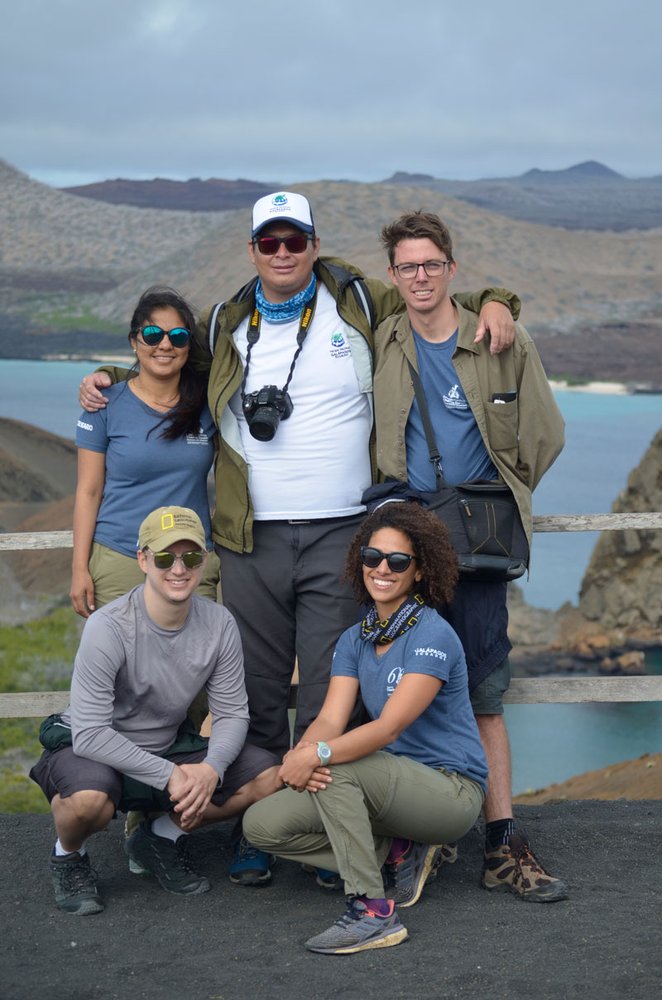
The team used an autonomous, free-falling deep sea camera system, developed by the National Geographic Society’s Exploration Technology Lab. The system consists of a camera housed within a thick glass sphere, to which lights and a bait case are attached, and is designed to capture high-quality video of deep-sea life near the ocean floor. Other key goals of the study were to develop long-term deep-sea research methods for employing low cost and easy to use instruments, to and provide training to local scientists and students. The field phase of the study took place on six expeditions aboard Lindblad Expedition’s National Geographic Endeavour II in the Galapagos, September 21 - October 26, 2019.
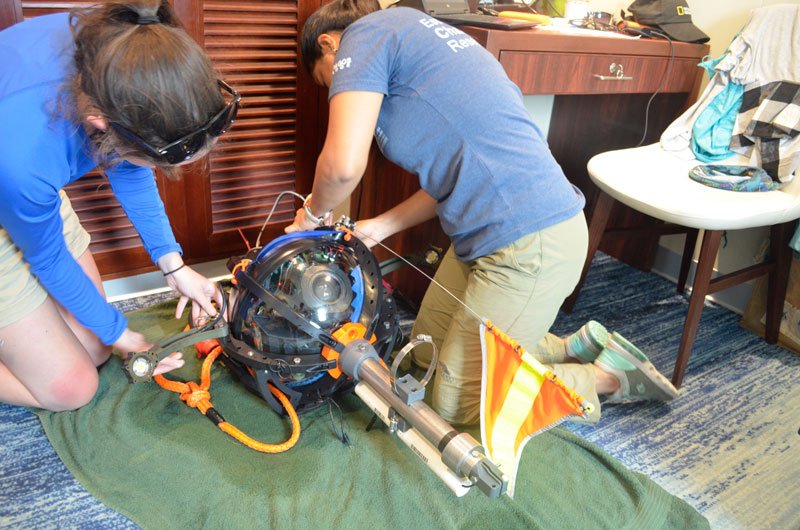
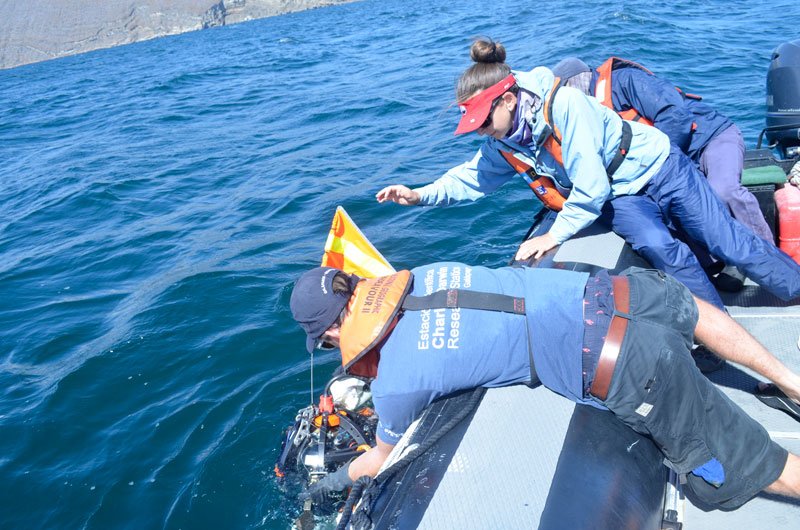
The scientists deployed the National Geographic deep sea camera system 33 times, between depths of 150 to 1,500 m, near nine different islands and covering most regions of the Galapagos archipelago, with the exception of the far northern islands Darwin and Wolf.
"This exciting discovery demonstrates the critical importance of low-cost sensors, the creation of new technologies to more quickly analyze data, and training of early career scientists in developing countries. We simply don't know how many species are waiting to be identified in entirely new regions that don’t yet have the capacity for deep sea exploration," said Dr. Katy Croff Bell, National Geographic Explorer and MIT Open Ocean Director.
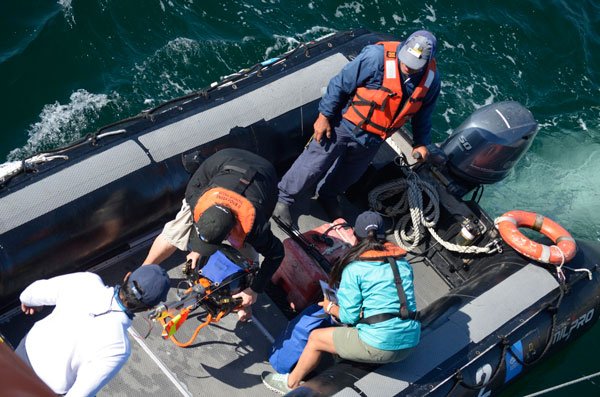
About the Galápagos Marine Reserve
The new shark recordings were observed inside the GMR, established in 1998 to protect the Archipelago’s marine biodiversity by banning large-scale commercial fisheries. The GMR lies in the Eastern Tropical Pacific, approximately 1,000 km from mainland Ecuador, and covers approximately 138,000 km2.
Learn more about this study on the new cow shark records in Galapagos: https://onlinelibrary.wiley.com/doi/abs/10.1111/jfb.14447
Acknowledgments
The research was made possible by the research permit (PC-56-19) granted by the Galápagos National Park Directorate, and by monetary, logistical, and technological support from the National Geographic Society, Lindblad Expeditions, MIT, and Ms. Karen Lo.
Thanks to the participants involved in this study:
Charles Darwin Foundation senior scientist Salome Buglass, and science interns Shannon Nagy and Paulina Cepa Egas; Galápagos National Park wardens Fernando Rivera, Alberto Proaño and Jorge Baque, and volunteers Favio Rivera and Franklin Checca; National Geographic Society scientists Alan Turchik, Jonatha Giddens, and Denley Delaney; Lindblad Expeditions Naturalists/scientific liaisons Cynthia Manning, Giana Haro, Ixora Berdonces Duran, and Ashley Knight; Massachusetts Institute of Technology researchers Dr. Katy Croff Bell and Dr. Daniel Novy, and students, Alexis Hope, Sarah Sclarsic, Margaret Sullivan, Oceane Boulais and Evan Denmark. National Geographic Endeavour II Captain.





